Every pregnancy belly looks different, and it’s totally normal to wonder what yours might be like. Here’s when you might see your pregnancy bump and how it may grow and change.
-
Tracking cycle
-
Getting pregnant
-
Pregnancy
-
Help Center
-
Flo for Partners
-
Anonymous Mode
-
Flo app reviews
-
Flo Premium New
-
Secret Chats New
-
Symptom Checker New
-
Your cycle
-
Health 360°
-
Getting pregnant
-
Pregnancy
-
Being a mom
-
LGBTQ+
-
Quizzes
-
Ovulation calculator
-
hCG calculator
-
Pregnancy test calculator
-
Menstrual cycle calculator
-
Period calculator
-
Implantation calculator
-
Pregnancy weeks to months calculator
-
Pregnancy due date calculator
-
IVF and FET due date calculator
-
Due date calculator by ultrasound
-
Medical Affairs
-
Science & Research
-
Pass It On Project New
-
Privacy Portal
-
Press Center
-
Flo Accuracy
-
Careers
-
Contact Us
When might your pregnancy start showing?
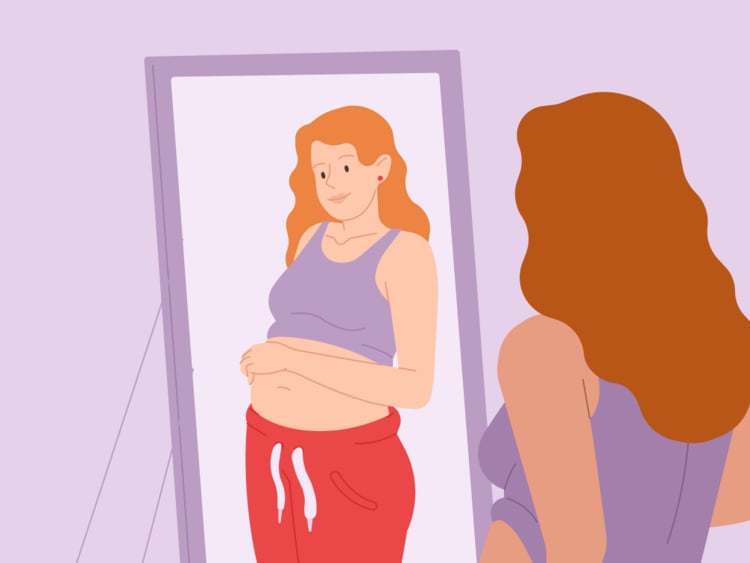

Every piece of content at Flo Health adheres to the highest editorial standards for language, style, and medical accuracy. To learn what we do to deliver the best health and lifestyle insights to you, check out our content review principles.
Pregnancy can be marked by so many physical and emotional milestones. From doing a test and finding out you’re pregnant to telling your friends and family and starting to feel the first signs that you’re expecting (hello, pregnancy nausea), it can feel like a roller coaster. When you start to see your bump grow, it can make pregnancy feel very real all of a sudden. But when might you start to show?
You’ll likely already know that no two pregnancies are exactly the same, so it’s tough to give out one-size-fits-all answers. Some people “pop” a lot sooner than others. But here’s the lowdown on when you might notice your pregnancy belly growing and how it changes as you move from trimester to trimester.
Key takeaways
- Your body undergoes some pretty monumental changes during pregnancy, and the most obvious signifier that you’re expecting is your growing baby bump.
- It can be hard to say when you might “pop,” as it can happen at different times for different people. However, you may start to notice your pregnant belly growing from around your 12th week of pregnancy or around the end of your 1st trimester.
- Every pregnancy belly will be different, and there’s no “normal” size or shape. To determine how your pregnancy is developing, your health care provider won’t be looking at the shape of your belly at all.
- Aside from the size of your baby, there are lots of things that can impact when you start to see your baby bump and how big it grows, including your body type and the position of your uterus (more on this below).
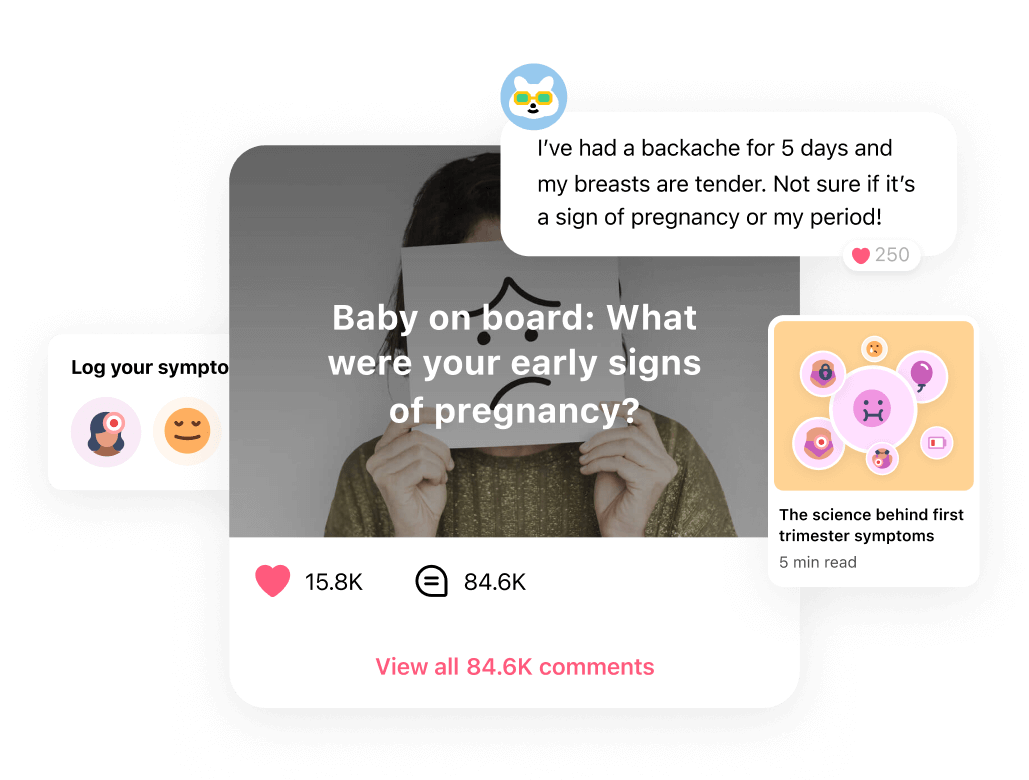
 Over
7.8M
ratings averaging
4.8/5
*
Over
7.8M
ratings averaging
4.8/5
*
Understand your body’s signals with the Flo app
- Chat with others who are trying to get pregnant.
- Get trusted information on signs of pregnancy from 100+ medical experts.
- Log your symptoms and learn what they could be trying to tell you.
 Over
7.8M
ratings averaging
4.8/5
*
Over
7.8M
ratings averaging
4.8/5
*
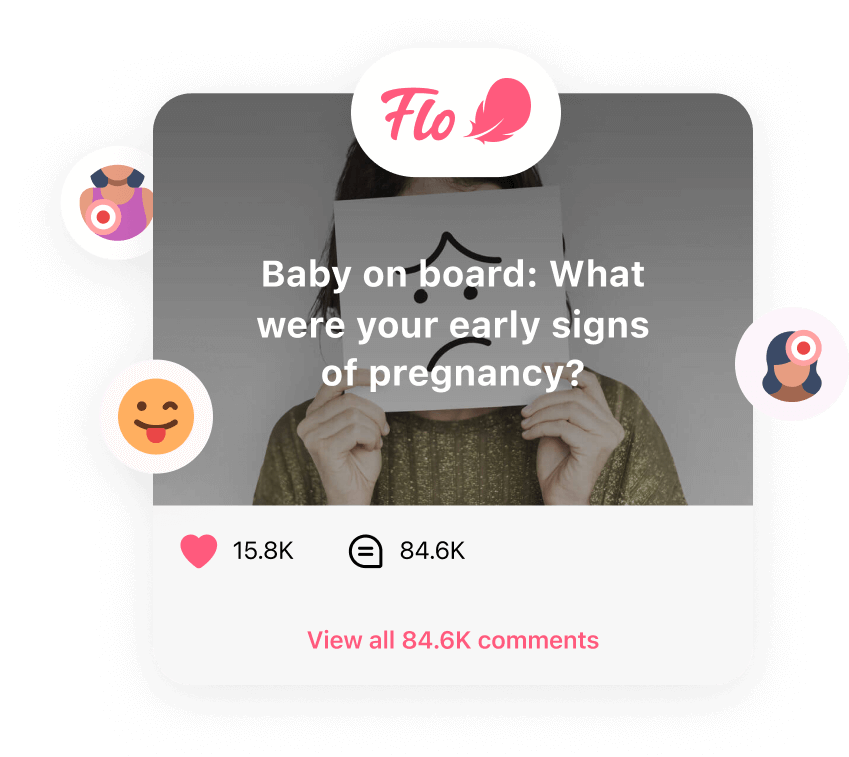
Trying to conceive?
The Flo app can help you through the two-week wait.

 Over
7.8M
ratings averaging
4.8/5
*
Over
7.8M
ratings averaging
4.8/5
*
Understand your body’s signals with the Flo app
- Chat with others who are trying to get pregnant.
- Get trusted information on signs of pregnancy from 100+ medical experts.
- Log your symptoms and learn what they could be trying to tell you.
When do you start showing in pregnancy?
As you likely already know, every pregnancy is different, and every pregnant belly can grow at a different pace. Yours will change as you move through your trimesters. However, you might first start to notice some visible changes to the size of your belly around the 12th week of your pregnancy. This happens because during your first three months, your uterus may fit inside your pelvis. After week 12, as your baby grows, it will start to get bigger, and you may start to show.
If you’re in your 12th week and haven’t seen many changes, try to remember that everyone’s on their own timeline.
Take a quiz
Find out what you can do with our Health Assistant
“A lot of people will [say to me], ‘I don’t have a big enough bump,’ or a bump isn’t showing, and they stress out about it,” says Dr. Charlsie Celestine, obstetrician and gynecologist, New Jersey, US. “As long as everything is OK with your baby, your ultrasounds, and your doctor’s visits, it really doesn’t matter what your bump looks like.”
Of course, that can be easier said than done. But to help you feel reassured that there’s no “normal” when it comes to what your bump looks like, you can speak to other parents-to-be in Flo’s Secret Chats spaces. Here, you can ask questions anonymously and chat with people with similar thoughts and worries as you. You can also learn more about how you and your baby are growing using an app like Flo.
When might you start showing in your first pregnancy?
If you’ve never been pregnant before, it can be hard to know what to expect. The fact that it’s your first pregnancy shouldn’t change anything to do with your bump, except that you may be a little further into your 2nd trimester before you start to show.
“When you first have a baby, your body’s never done it before. Your abdominal muscles are still tight. [They have] never been stretched, so everything holds together a little bit longer,” Dr. Celestine explains.
When might you start showing in your second pregnancy?
As you go into your second pregnancy, you’ll be armed with all the knowledge you have from your first. You’ll know which foods you couldn’t stand the first time around and the special tricks you found to ease nausea. Your body may also remember what it was like to expand to house a baby.
“Usually in a second pregnancy, you see the baby bump sooner,” Dr. Celestine explains. Your muscles have stretched for pregnancy previously, so during round two (or three, or more), they’re able to expand again more easily.
However, as we’ve said, no two pregnancies are the same. The symptoms you might experience won’t necessarily be the same, and you may see your baby bump at a different point.
You can use the week you saw your baby bump “pop” in your first pregnancy as a bit of a guide. But try not to worry if your bump looks smaller or different in your second. Your doctor will keep you updated about how you and your baby are progressing.
When might you start showing with twins or multiples?
Logic would dictate that the more babies you’re having, the bigger your bump, right? Technically, this is the case, and you may start showing earlier. However, an important caveat here is that a pregnancy belly with multiples will be bigger for you, but not necessarily in comparison to others.
“If you had one baby before, and then the next time you’re pregnant, you have twins, you will be bigger than when you had one baby,” Dr. Celestine says. “[But] I’ve seen [people pregnant with] twins, and their [bumps] look smaller than other people that have one baby.” So, you can only really compare your baby belly to yourself.
What affects when your pregnant belly starts showing?
As Dr. Celestine points out, there’s no real way of accurately predicting when your pregnant belly will start showing. “For some people, it’s really early on. It really does depend on your body, your height, your weight, and how your uterus is tilted,” she says. These are the factors that may play a part in it:
Your core muscles
As we’ve already touched on, if your abdominal muscles have stretched before during a previous pregnancy, then they may expand more easily the second time around. That’s thanks, in part, to a hormone called relaxin.
The position of your uterus
You might have seen a picture of a uterus in your doctor’s office and assumed everyone’s looks the same. But just like no two pregnancies are identical, your uterus is unique to you, too.
Your uterus has a lining, which is what your fertilized egg attaches to — and it’s where your baby grows and develops. It may be slightly tilted forward (known as an anteverted uterus). Or it may tilt backward (a retroverted uterus). Alternatively, it might sit somewhere in the middle. Generally speaking, all of these positions are totally typical and nothing to worry about. They can have a bearing on the way your baby bump looks, though.
“Let’s say you have a tilted-back uterus. [During pregnancy,] it might not pop forward as soon as somebody’s that already had a tilted-forward uterus. At the end of the day, they all end up in the same place [popping forward], so it doesn’t really matter where the uterus starts,” Dr. Celestine says.
Your body type
“Usually I would say if you’re taller and leaner, your bump usually stretches more upwards, as opposed to out first. And if you’re shorter, the bump tends to pop out more first, instead of going up,” says Dr. Celestine. “That’s what I see most commonly.” However, this isn’t the case for everyone. Whichever way — and whenever — your bump grows will be right and natural for your body.
Baby size
Just like having multiples may mean you show sooner, if your baby grows more quickly, then you might see your bump sooner. “If you have a bigger baby that’s measuring larger than average, your belly will be a little bit larger than somebody who has a smaller baby,” advises Dr. Celestine.
For context, most babies are born weighing between 5 and 8 lb (about 2 to 4 kg) and will put on most weight during the 3rd trimester. Your baby’s size is something your doctor will monitor throughout your pregnancy, so try not to worry about drawing your own conclusions based on your bump.
How your baby bump could progress
As you move through your pregnancy, you won’t just notice your pregnant belly getting bigger. It can also change shape and position.
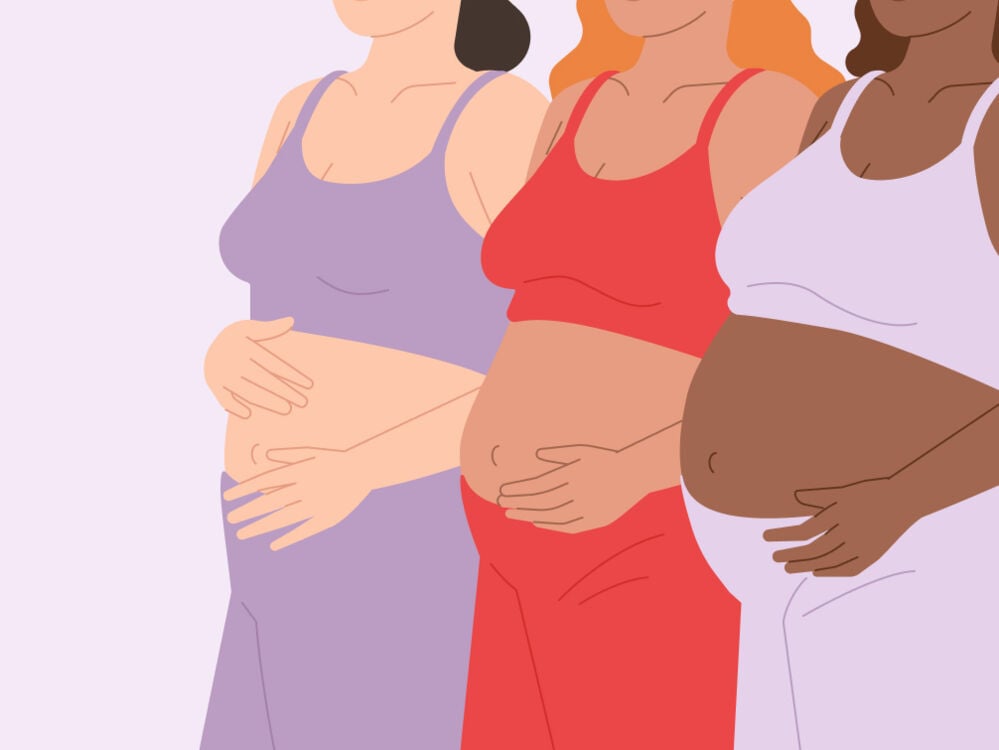
You might have heard your doctor say that you have a “high” pregnant belly or a “low” pregnant belly. This simply means that if your pregnant belly is higher, you’re carrying higher on your body. This can be quite common in the earlier stages of pregnancy when you first start to show. Once you enter your 3rd trimester, your bump may drop lower. This is your baby and body’s clever way of preparing for labor. Here’s more information on what you might see in your 1st, 2nd, and 3rd trimester:
Trimester 1 (the first day of your last missed period to 13 weeks of pregnancy): You might not start showing until the end of your 1st trimester. This is because at the start of your pregnancy, your uterus is about the size of a fist — about 3 in (7 cm) tall and 2 in (5 cm) wide. “[It sits] in your pelvis, low, below the bones. Usually [you] can’t even feel it if you’re not pregnant,” explains Dr. Celestine.
As your baby starts to grow and develop during the first 13 weeks of pregnancy, your uterus may start to grow upward and outward. This is why you might start to see a small bump toward the end of your 1st trimester.
Trimester 2 (14 weeks to 27 weeks): As your baby continues to grow into your 2nd trimester, so does your uterus. It will continue to stretch upward and outward, all the way up to under your ribs, Dr. Celestine explains. “We usually say at about 20 weeks of pregnancy, your uterus is near the belly button.”
Alongside seeing your bump growing, you might even feel your uterus stretching. Do you remember the round ligaments that surround your uterus that we mentioned earlier? Well, your ovaries and placenta start to produce relaxin, which helps loosen these round ligaments and your pelvic muscles. As they stretch, it can cause spasms and pain. This is called round ligament pain.
You might feel this discomfort on both sides of your body or just one, and quick movements like coughing or sneezing can make it worse. Wearing a belly band and stretching may help you to feel more comfortable.
Trimester 3 (28 weeks onward): As you enter your 3rd trimester, you’re on your final stretch of pregnancy, and this is when your baby grows and puts on weight most quickly. They may grow from around the size of a coconut to a watermelon in just three months. This means that your bump will likely feel heavy and may feel like it’s stretching.
As you get closer to giving birth, your bump will drop down as your baby moves into your pelvis. This is called lightening, and it can cause you to feel pressure around your pelvis. This is your body preparing you to give birth.
What to do if you’re not showing yet
In short, try not to worry about it. This may be easier said than done. It can be so tempting to compare your baby bump with that of your friends or people you see on social media, but remember that yours is unique, both in size and shape, and that’s totally healthy. If your health care provider is happy with how your pregnancy and baby are developing, try not to worry about how your bump looks.
“There’s no hard and fast rule for what your bump’s supposed to look like,” Dr. Celestine says. “Your doctor measures your bump, usually after you are 20 weeks and beyond. So if your doctor is not saying your bump is too big or too small, and if you’re not having ultrasounds that are showing that the baby’s too big or too small, then don’t worry about how [it] appears. And don’t worry about other people’s outside comments on your bump, because everybody’s different.”
If you have any questions or worries about how your bump feels or looks, then don’t hesitate to reach out to your health care provider. There’s no such thing as a silly question, and they will be able to check how both you and your baby are progressing.
More frequently asked questions about when you might start showing in pregnancy
When will my bump pop?
Frustratingly, there’s not a one-size-fits-all answer for everyone. But, Dr. Celestine says, “I would say most people are showing in their 2nd trimester in some way, shape, or form.” You may start to notice slight changes in the way your belly looks or feels from around the 12th week of pregnancy. This is because as you enter your 2nd trimester, your uterus will begin to expand beyond your pelvis.
How should a pregnant belly feel?
The way your pregnant belly feels can change as your baby grows. When you’re not pregnant, your belly might feel soft when you press it. This is the case during early pregnancy too. However, as your baby gets bigger and you enter the later stages of pregnancy, your bump may feel harder or more stretched.
What’s a B belly in pregnancy?
Not all pregnancy bellies are the same shape. Some people say theirs looks more B shaped rather than D shaped, with a dip in the middle rather than one smooth round. This isn’t a medically recognized thing, and as there isn’t one standard bump type, it’s fine if yours isn’t D shaped. With a baby moving around, you might notice bump changes throughout pregnancy.
“How the baby’s positioned in the uterus can cause the bump to look like different shapes, and the baby is constantly moving,” Dr. Celestine explains.


Hey, I'm Anique
I started using Flo app to track my period and ovulation because we wanted to have a baby.


The Flo app helped me learn about my body and spot ovulation signs during our conception journey.


I vividly
remember the day
that we switched
Flo into
Pregnancy Mode — it was
such a special
moment.
Real stories, real results
Learn how the Flo app became an amazing cheerleader for us on our conception journey.
References
“20 Week Ultrasound (Anatomy Scan): What to Expect.” Cleveland Clinic, my.clevelandclinic.org/health/diagnostics/22644-20-week-ultrasound. Accessed 11 Sep. 2024.
“Anteverted Uterus.” Cleveland Clinic, my.clevelandclinic.org/health/diseases/22569-anteverted-uterus. Accessed 11 Sep. 2024.
“Changes during Pregnancy.” The American College of Obstetricians and Gynecologists, Nov. 2023, www.acog.org/womens-health/infographics/changes-during-pregnancy.
“Fetal Development: The 3rd Trimester?” Mayo Clinic, 3 June 2022, www.mayoclinic.org/healthy-lifestyle/pregnancy-week-by-week/in-depth/fetal-development/art-20045997.
“Food Aversion.” Cleveland Clinic, my.clevelandclinic.org/health/diseases/22948-food-aversion. Accessed 11 Sep. 2024.
“Fundal Height.” Cleveland Clinic, my.clevelandclinic.org/health/diagnostics/22294-fundal-height. Accessed 11 Sep. 2024.
“How Does a Second Pregnancy Differ from the First?” Tommy’s, www.tommys.org/pregnancy-information/im-pregnant/ask-a-midwife/how-does-second-pregnancy-differ-first. Accessed 11 Sep. 2024.
“How Your Baby Develops Week to Week.” NHS Inform, 4 Mar. 2024, www.nhsinform.scot/ready-steady-baby/pregnancy/your-baby-s-development/how-your-baby-develops-week-to-week.
“How Your Fetus Grows during Pregnancy.” The American College of Obstetricians and Gynecologists, Jan. 2024, www.acog.org/womens-health/faqs/how-your-fetus-grows-during-pregnancy.
“Low Birth Weight.” Cleveland Clinic, my.clevelandclinic.org/health/diseases/24980-low-birth-weight. Accessed 11 Sep. 2024.
“Morning Sickness.” Cleveland Clinic, my.clevelandclinic.org/health/diseases/16566-morning-sickness-nausea-and-vomiting-of-pregnancy. Accessed 11 Sep. 2024.
Pascual, Zoey N., and Michelle D. Langaker. “Physiology, Pregnancy.” StatPearls, StatPearls Publishing, 2023.
“Prenatal Care: Second Trimester Visits.” Mayo Clinic, 26 July 2024, www.mayoclinic.org/healthy-lifestyle/pregnancy-week-by-week/in-depth/prenatal-care/art-20044581.
“Relaxin.” Cleveland Clinic, my.clevelandclinic.org/health/body/24305-relaxin. Accessed 11 Sep. 2024.
“Relaxin.” ScienceDirect, www.sciencedirect.com/topics/agricultural-and-biological-sciences/relaxin. Accessed 11 Sept. 2024.
“Retroverted Uterus.” Cleveland Clinic, my.clevelandclinic.org/health/diseases/23426-retroverted-uterus. Accessed 11 Sep. 2024.
“Round Ligament Pain.” Cleveland Clinic, my.clevelandclinic.org/health/symptoms/21642-round-ligament-pain. Accessed 11 Sep. 2024.
“Signs of Labor: Know What to Expect.” Mayo Clinic, 23 July 2024, www.mayoclinic.org/healthy-lifestyle/labor-and-delivery/in-depth/signs-of-labor/art-20046184.
“The Third Trimester.” Johns Hopkins Medicine, www.hopkinsmedicine.org/health/wellness-and-prevention/the-third-trimester. Accessed 11 Sep. 2024.
“Twin Pregnancy.” Cleveland Clinic, my.clevelandclinic.org/health/articles/23158-twin-pregnancy. Accessed 11 Sep. 2024.
“Ultrasound Exams.” The American College of Obstetricians and Gynecologists, June 2017, www.acog.org/womens-health/faqs/ultrasound-exams.
“Uterus.” Cleveland Clinic, my.clevelandclinic.org/health/body/22467-uterus. Accessed 11 Sep. 2024.
“What Is a Fundal Height Measurement? Why Does It Matter?” Mayo Clinic, 7 Mar. 2024, www.mayoclinic.org/healthy-lifestyle/pregnancy-week-by-week/expert-answers/fundal-height/faq-20057962.
History of updates
Current version (27 September 2024)
Published (16 September 2019)
In this article
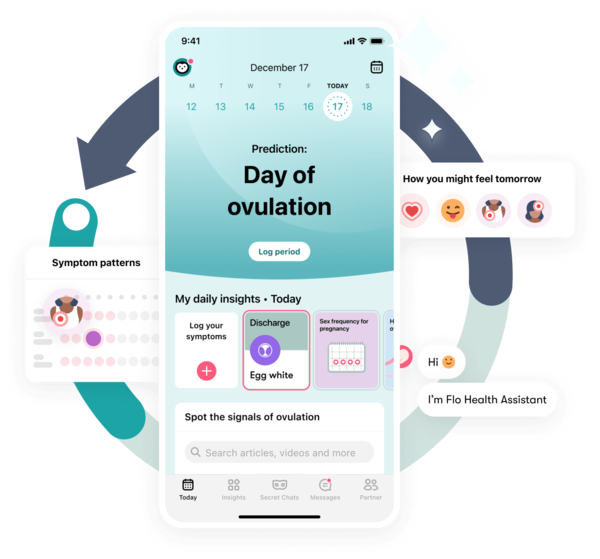
Get your personal guide to fertility
-
Learn how to read your body's ovulation signals
-
Find daily conception tips from our experts
-
Chat with others who are trying to get pregnant




